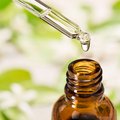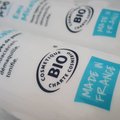
In a cosmetic, it is possible to include different categories of cosmetic ingredients stemming from nature. It’s no secret that, today, these ingredients are often used as a point of reference on the cosmetic’s packaging in order to seduce the consumer. In this article, we will help you understand these varying categories of natural ingredients so that you can feel more confident in knowing exactly what your product is composed of.
The differences between natural, of natural origin and organic ingredients.
Before diving into the subject, we just want to state that “natural” ingredients, ingredients “of natural origin” and “organic” ingredients all come from nature. This meaning they are derived from plant, animal or microbial organisms.
We would also like to be clear in that the definitions provided in this article are sourced from the Cosmos Standard, which are the principles employed by our association in order to attribute the Cosmébio label to certain cosmetics.
Natural Ingredients
In a Cosmébio labelled cosmetic, natural ingredients are a category of ingredients that group together water, minerals and agricultural ingredients . In a product, these ingredients can be incorporated in two ways:
- Raw unprocessed – the ingredient is used as it is at the moment of collection
- After being extracted or physically processed – for example, pressing or crushing a grain, macerating a plant…
The technical term used in the Cosmos Standard to distinguish the natural ingredients being incorporated using the second method is Physically Processed Agro-Ingredients (PPAI).
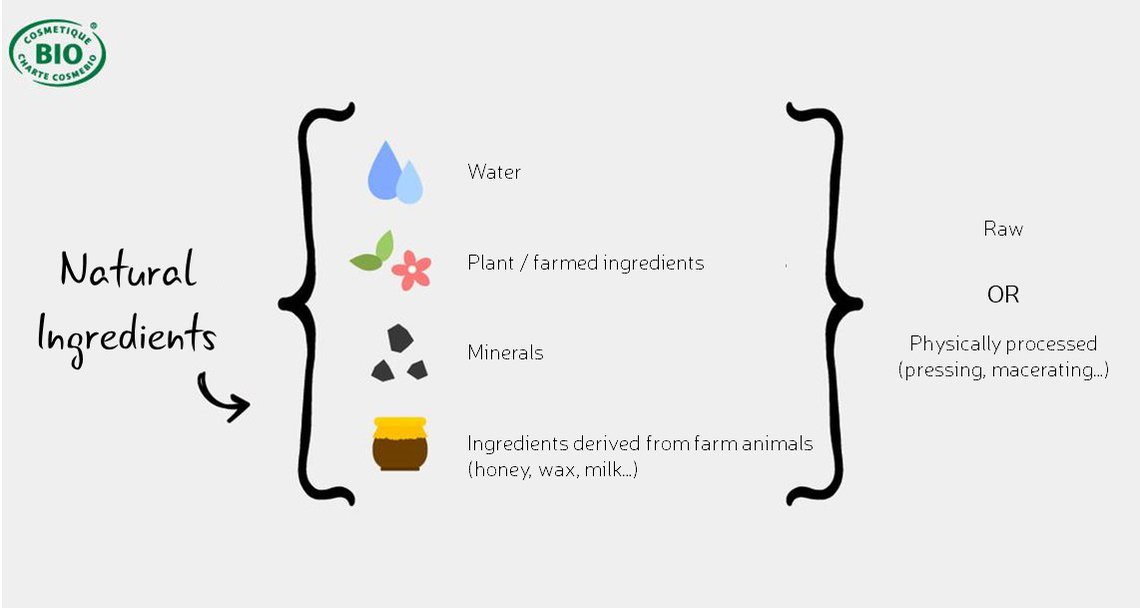
Ingredients of Natural Origin
Ingredients of natural origin distinguish all ingredients that have NOT been obtained using petrol. These are natural ingredients that underwent a physical transformation as well as natural ingredients that have been chemically extracted or treated following the guidelines of Green Chemistry. This means, ingredients that required a chemical reaction between multiple natural elements in order to create the final product.
The technical term used in the Cosmos Standard to distinguish natural ingredients undergoing a chemical process to create the finished ingredient is Chemically Processed Agro-Ingredients (CPAI).
A great example is soap. Soap is an ingredient that has went through a chemical transformation. Saponification, the process of soap making, is in fact a chemical reaction between a fat (oil, butter, etc) and a lye.
Natural ingredients are therefore, a sub-category of ingredients of natural origin.
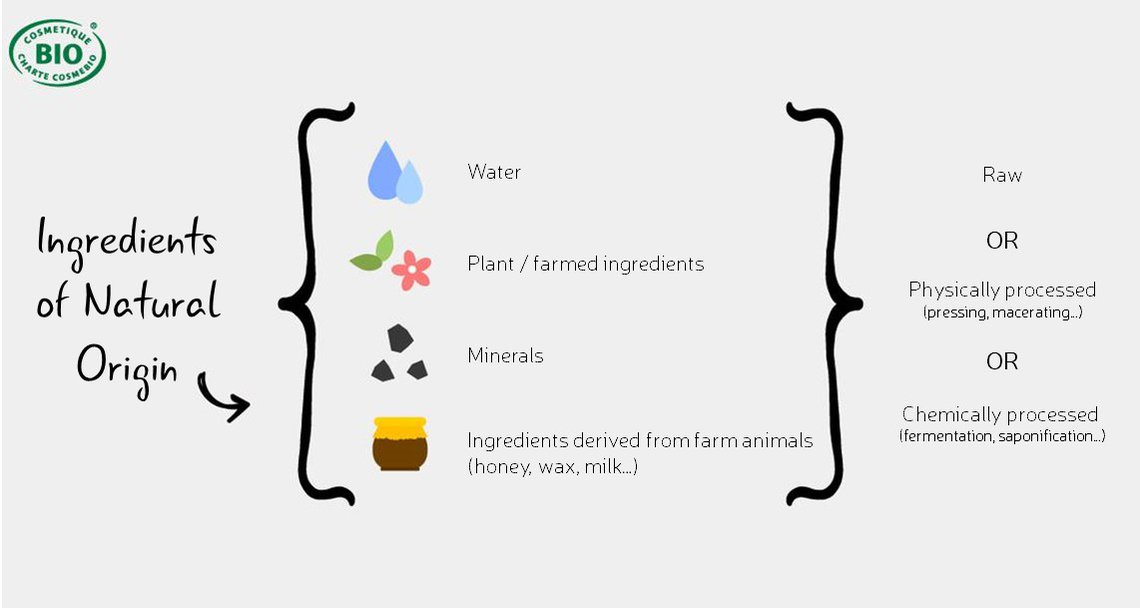
It is important to not make generalizations when considering the words “chemical”, “chemical reactions”, “chemistry”, etc. Chemistry does not necessarily mean noxious. One must not confused chemistry with petrochemistry. The latter term uses petrol in its chemical reactions and is not conform to the 7th principal of Green Chemistry “The use of renewable resources”.
Organic Ingredients
Organic ingredients are derived using the organic farming principals and are therefore, evidently, natural or of natural origin. Organic ingredients can also come wild foraging as long as it can be proven that the standards put in place by organic farming have been respected.
For info: water and minerals cannot be organically certified because they cannot be grown and cultivated. According to their method of processing, they will be considered a natural ingredient or an ingredient of natural origin.
What is the ratio of these ingredients used when composing a Cosmébio labelled cosmetic?
In a cosmetic that has been labelled Cosmébio we will find:
- A minimum 95% of ingredients of natural origin
- A minimum 95% of organic ingredients among the ingredients capable of being certified organic (these previously defined agro-ingredients that are cultivated through plant and animal farming, so again not including water or minerals)
- A minimum 20% of organic ingredients in the finished product. Because water and minerals can’t be considered organic, they don’t help make up this 20%. (10% minimum for mineral based or rinsable products).
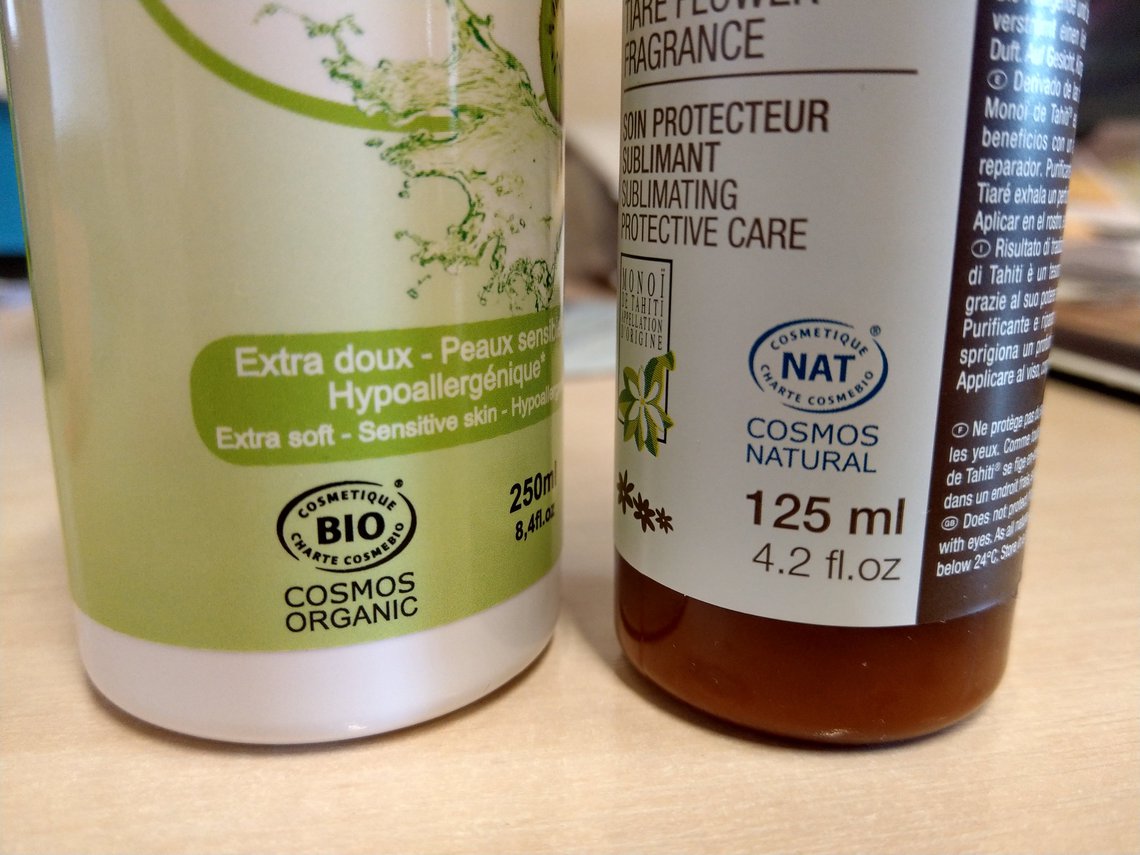
What are the differences using the definitions from ISO 16128?
ISO 16128 is a text that defines different categories of cosmetic ingredients. Industrial cosmetic companies use it in order to know how much of their product is natural. The problem is that contrary to standards used by organic labels, the text doesn’t take into account the total composition of the products.
To put it simply, a brand creates their product with no restrictions, then uses the ISO 16128 standard to know the percent of ingredients of natural origin contained within the finished product. Therefore, the cosmetic could very well have a high percentage of ingredients of natural origin, but still contain controversial ingredients such as silicones, parabens, etc.
Want to know more about ISO 16128, read this! : décryptage d'un produit norme ISO 16128.

